Sri Lanka: Elephant Island
For BBC Natural World/Animal Planet
Martyn Colbeck travels to Sri Lanka to explore the life of the native Asian elephant subspecies. Drawing on years of experience studying their African counterparts, Martyn observes the social behaviour of this understudied subspecies in an effort to understand their differences. With the help of elephant expert Shermin de Silva, Martyn observes the elephants throughout monsoon season, studying their social interactions, observing relationships with newborns and meeting the orphans of the Elephant Transit House, who may one day be returned to the wild.
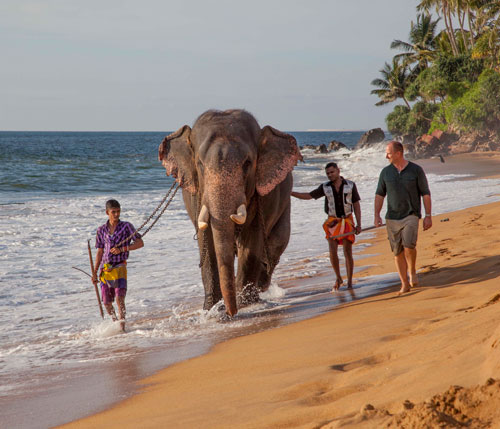
THE STORY TOLD IN THE FILM
The film follows Martyn Colbeck as he travels around Uda Walawe National Park, Sri Lanka, in an effort to learn how the island’s unique subspecies of Asian elephant differs from the African elephants he has studied for over 25 years.
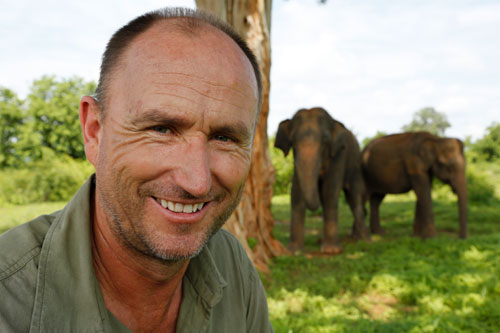
Sri Lanka’s elephants have long been overlooked due to the island’s 30 year civil war. With relatively little research conducted on the iconic Sri Lankan subspecies, their social interaction and behaviour is relatively unknown.
Determined to find out more, Martyn visits the National Park with elephant expert Shermin de Silva, who has been studying the elephants for 7 years.
Beginning their journey at the end of the dry season, Martyn and Shermin use clues from the elephants’ bodies to identify the individuals within the groups. But determining the relationships between the elephants is much harder, and Shermin explains that a deeper awareness of the elephants’ behaviour may be the key.
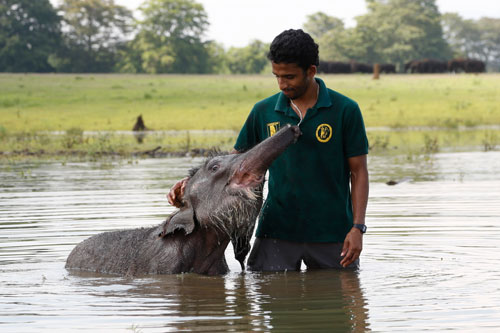
Unlike African elephants, the Asian elephants have a fluid social system, not sticking to the rule of one matriarch. This encourages smaller groups to form within one large herd, and creates more opportunity for social interaction.
As the monsoon nears, Martyn is keen to observe the mother-baby bond among Asian elephants. Unable to locate a newborn, Shermin takes Martyn to the Elephant Transit House (ETH) on the edge of the park. The ETH is dedicated to caring for orphaned elephants until they are ready to be released into the wild. Keeping a distance, the keepers encourage the orphans to learn from each other, giving them a larger chance of surviving in the wild. But one elephant may never be released.
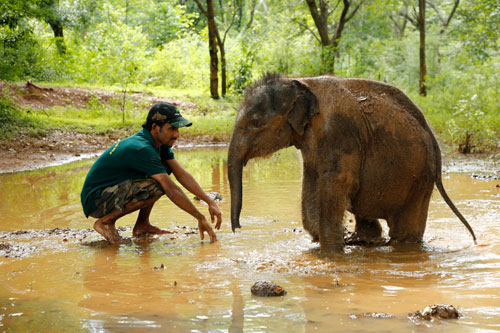
Namal lost his leg in a trap and is unable to interact with the rest the group. Spending most of his days with his keeper Salinda, Namal is missing out on important social bonding. Namal now sees humans as his family, meaning that he may never have the opportunity to return to the wild.
The monsoon season begins, and the males and females joining together to enjoy the spoils. The males are also going through a change, commonly known as musth. During musth, male elephants have 60 times more testosterone that usual, leading to an increase in aggression and fighting. Why does it happen? No one knows. It is another mystery of the Asian elephants that Shermin is yet to solve.
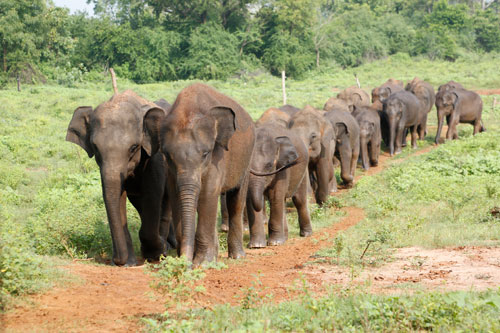
Back at the ETH it’s feeding time. By encouraging the elephants to learn from each other, the keepers have enabled the orphans to educate themselves in elephant behaviour, including the art of patience. Unfortunately, there is no way of knowing if they are missing out on any important lessons they’ll need to survive in the wild.
Martyn is still determined to find a newborn and finally his hard work pays off. He spots a tiny calf but it appears as though a strange female is fighting for the baby. Martyn looks on as the strange female wins the battle with its mother and takes it away, seemingly unaware that she is unable to produce milk to keep it alive. Shermin explains that the strange female was an orphan released by the ETH. Used to befriending for young calves, the now adult female doesn’t understand how to behave in the wild. But there is nothing Martyn can do but hope the calf’s mother eventually fights back.
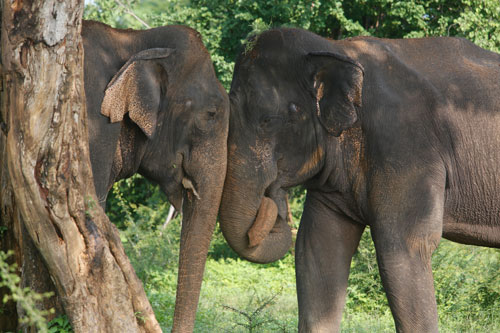
Returning to the male elephants, Martyn is reminded of the species’ intelligence. By breaking branches and moving them from side to side, male elephants have developed a creative means of swatting flies. Only seen in male elephants, this fly swatter is another example of the importance of education amongst elephants.

As he comes to the end of his journey, Martyn is keen to locate the newborn. After days of searching, Martyn finally spots it in the distance, and is delighted to see that it is back with its mother. Possibly abandoned by the adult orphan, it is clear that there are some lessons that elephants can only learn in the wild.
His journey is over, but Martyn makes one final trip to the ETH. Progressing in leaps and bounds, Namal is now weaned onto solid food and ready to meet the group. Martyn looks on as Namal meets the other for the first time and delights in making new friends.
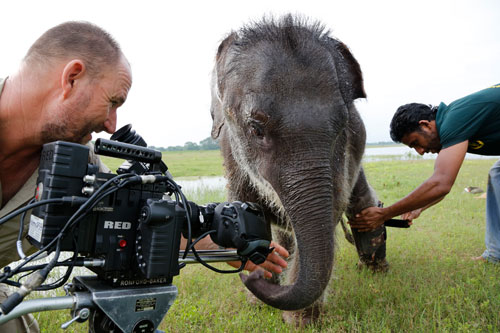
At the end of the film, Martyn reflects on what he has learnt throughout his journey. Making a comparison between his beloved African elephants and the Asian elephants of Sri Lanka, he points out that the importance of education and relationships is key to both species, but the relationships built amongst Asian elephants take their own unique form.
Our Programmes